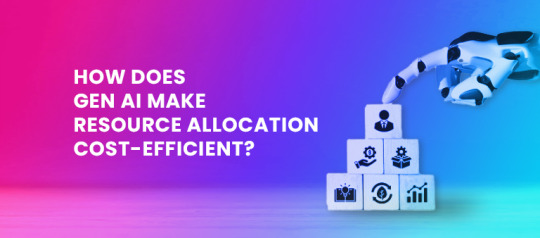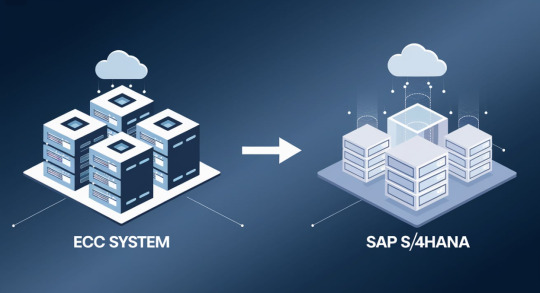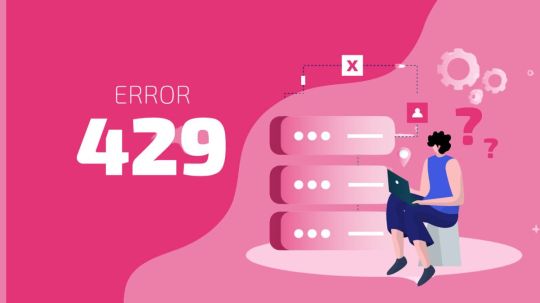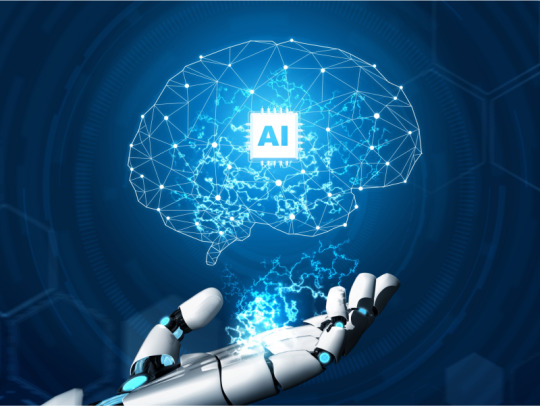#Gen AI in resource management
Explore tagged Tumblr posts
Text
How Does Gen AI Make Resource Allocation Cost-Efficient?
Find out how Gen AI enhances cost-efficiency in resource allocation with cutting-edge algorithms and data insights for smarter business decisions.

In the contemporary business world, strategy implementation requires proper management of resources to sustain organizational competitiveness. Resource allocation is a critical capability for today’s businesses as it enables efficient and effective resource usage as a way of optimizing profits and reducing costs. However, most traditional techniques for resource allocation are defective since the data used are either inaccurate or insufficient to exact resource optimizations. This is where Generative AI (Gen AI) comes into play. Gen AI is revolutionizing the way businesses approach the management of their resources through increased efficiency, operational costs, and responsiveness to changing market conditions, all due to its use of sophisticated algorithms and access to large quantities of data.
Generative AI offers a new dimension in the concept of cost because they make data as the center of resource management plans. Through its real-time analysis of large datasets, Gen AI can help businesses make better decisions on the deployment of their resources. In terms of inventory, workforce, or supplies, Generative AI guarantees the spending of available resources to the least possible extent. As mentioned above the advantages of implementing Gen AI in resource management is not a pipe dream; there are already companies across industries that are realizing lower operational costs and higher efficiency.
Predictive Analytics for Demand Forecasting
The most significant application of Generative AI in the allocation of resources is its predictive analytics use in demand forecasting. Gen AI uses historical data to make persistent analyzes and draw the corresponding conclusion of future demand for products and/or services. It is most applicable in the management of inventory since both overstocking and stock-outs can be very costly. Overstocking means keeping excess inventory leads to the consumption of company capital, and stock-outs lead to lost business and customers’ disappointment. This is where Generative AI can help with demand forecasting, allowing businesses to have just the right amount of stock which is optimal for fulfilling customer needs without overstocking.
For example, a retailer leveraging Gen AI for demand forecasting can plan for increased demand of certain products during festive occasions and replenish their stock in advance. This approach reduces the probability of overstocking, but also helps to avoid stock-outs and hence the use of resources and costs are optimized. Within industries like manufacturing where raw materials and production schedules need to be carefully managed, Generative AI can forecast fluctuations in demand and optimize the supply chain as well, further reducing costs and improving efficiency.
Optimizing Workforce Allocation
There are other important area like workforce management where Generative AI can drive significant cost efficiencies. Typically, workforce management often involves manual scheduling, and this causes some problems such as high levels of inefficiency in utilization of labor resources, which include time wastage and over-time costs. As for generative AI, it is capable of identifying workforce needs of a company based on project requirements, skills and workload balances. This way, it avoids issues such as over staffing, which may lead to wastage of resources, or understaffing that may slow down productivity.
For example, in a manufacturing plant, Gen AI is capable of estimating peak and off production seasons and then schedule the employees. For instance, the AI could recommend hiring additional workers during peak production periods as well as downsizing during slower periods. Such a level of precision in workforce allocation not only reduces idle time and overtime expenses but also enhances overall productivity. Several companies that have integrated AI in workforce management solutions have realized better control of workforce costs and increased employees’ satisfaction since the workforce is well-matched with the business needs.
Enhancing Supply Chain Efficiency
Supply chain management usually involves a cocktail of issues including supplier selection, logistics, and inventory management which all have the tendency of contributing to the over cost of the overall chain. The innovation of generative AI presents a powerful solution to these challenges since it improves the transparency and flow of supply chain. Gen AI is also very effective in analyzing data from all supply chain links from the procurement of raw materials to final product delivery; Gen AI can identify cost-effective suppliers, optimize logistics routes, and streamline inventory management.
For instance, Generative AI can analyze historical data to identify the best suppliers regarding delivery time, quality, and price in the supply chain. It also simplifies the process of finding new sources and can help to negotiate for better prices and improved supply chain reliability. As for the concept of logistic, Gen AI can easily find the best routes to transport goods, reducing fuel consumption and delivery times, which directly translates into cost savings. Further, by providing real-time insights into inventory levels, Generative AI is also important in eliminating excess stock and stock out situations hence increasing the efficiency of the supply chain and decrease operational costs.
Dynamic Pricing Models with Gen AI
Dynamic pricing is a method through which prices for products and services are varied according to the current market conditions. Generative AI helps to integrate flexible pricing strategies into enterprises with high levels of accuracy based on market changes. Having information about the customer behavior, competitor actions, and broader economic trends, Gen AI can suggest the optimal price adjustments that balance competitiveness with profitability.
For instance, an e-commerce platform with Gen AI to apply dynamic pricing will reduce product prices during low demand in the market in order to increase its sales revenue, and increase prices during high demand to increase its profits. This flexibility in pricing helps businesses want to remain relevant and at the same time make profits without having to compromise on its profit margins. Companies that have adopted the use of AI in pricing strategies have disclosed that they have realized an increase in revenue and profit margins, as they are able to respond more quickly and effectively to market changes.
Energy Consumption and Sustainability
The cost of energy consumption for a business is one of its significant expenses depending on the industry where it operates, specifically those relying heavily on energy, such as manufacturing industries and other sectors utilizing large amounts of energy. As for the challenges and the solutions, there are still some challenges to be addressed that lead to Generative AI’s major advantage of improving efficiency in energy consumption and leading to cost reduction for renewable energy, which in turn makes a positive impact toward achieving sustainability. Because the patterns of energy use, equipment performance, and production schedule can be monitored and analyzed, Gen AI can suggest changes to optimize energy use and increase efficiency.
For example, in the manufacturing environment, Gen AI can use data from sensors installed in manufacturing equipment to identify low energy consumption time and recommend changes to the schedules or equipment settings. This not only lowers energy costs but also supports the company’s sustainability initiatives by reducing its carbon footprint. Industries like automotive manufacturing where energy cost forms a good fraction of the total cost have already started realizing benefits of AI-driven energy management with companies recording improvements in energy consumption of more than 20%.
Risk Management and Cost Control
It is crucial to function as a risk management practice since uncontrolled risks may significantly impact the company’s profitability. Generative AI plays a crucial role in risk management, as it helps to determine risks before they occur and provides recommendations on how to avoided them. Using historical data, trends, and various indicators, Gen AI can predict potential disruptions and recommend ways of preventing or mitigating them.
For instance, in the financial sector of a business, Gen AI can look at the market tendencies, identify emerging economic risks that might affect either a company’s investment or operations. Through early identification of these risks, the AI enables the management to make necessary changes, including adjusting investment portfolios or resource allocations, to minimize loss. This proactive approach not only lowers the probability of losses, but also helps in better dealing with the budget management, as the resources can be distributed with more precision if the risks are taken into consideration.
Continuous Learning and Improvement
One of the major benefits of Generative AI is that it expands and develops a model while working on it. Unlike traditional systems, Gen AI receives new data more often and updates its algorithms for efficient resource allocation. This continuous learning process makes certain that the AI in cost management is always up to date achieving further improved levels of effectiveness and efficiency.
For example, in a retail context, Gen AI might initially analyze sales data to optimize inventory levels. As the customer data and seasonal trends are accumulated or the conditions of competition changes, the AI system would move to more effective recommendations of solution making the whole process cost saving and more efficient. Such continuous improvement process plays an important role in contemporary business environment in order to cope up with emerging business environments.
Conclusion
This is what generative AI is doing for businesses as it brings efficiency, flexibility, and profitability to resource management. Besides, more operational expertise, workforce and supply chain management, flexible pricing, and risk management allow Gen AI to greatly contribute to cost cutting and increased effectiveness. With the progressing advancement of Generative AI systems, it will be to businesses’ advantage to allocate the power of this technology to resource management. It is for this reason that cost management of the future is already here, and it is driven by Generative AI.
Original Source : https://bit.ly/4grgQU7
#AI In Cost Management#AI In Workforce Management Solutions#Gen AI For Demand Forecasting#Generative AI#Innovation Of Generative AI#Use Of AI In Pricing Strategies#benefits of AI-driven energy#Gen AI in resource management
0 notes
Text
The Great All Generation Nuzlocks Roundup
This is gonna be long and have multiple parts thanks to the image limit on posts. Each game will be headlined by their title in Bold Print so if you're only interested in certain games it'll be easy to filter through. These notes will also only be on the Successful Run of each game. I'll note how many times I wiped in each game, but largely won't mention those runs for sake of relative brevity.
All runs were performed with the following rules - Only One Encounter Per Route/Zone/Area/Cave [Unique Names Denote Separate Areas] No Duplicate Encounters No Using Items In Battle No In-Game Trades No Overleveling the next Gym Leader or Major Boss Purchased/Gift Pokemon Are Allowed (Though there is only one case where I use one) but count as your encounter for that Area. No Use Of 'Affection' Based Mechanics.
RED - Kanto is a genuine joy to Nuzlocke for a few reasons. It's quick to get going, most early game Pokemon are quite strong (Ratticate, Primeape, Nidoking/queen, and Fearow are all genuinely incredible encounters), and it has probably the most balanced set of starters overall with regards to choice. All three have viable reasonings to be picked in the context of a nuzlocke. I, personally, went with Bulbasaur because my primary goal was to Win The Game and not to flex.
Kanto's also great for developing basic skills for nuzlocking. Team building, knowing when to switch, resource/Power Point management, moveset scouting, etc. all go much farther than normal in Kanto thanks to the poor AI and generally weak enemy trainers.
My favorite thing about it, though, and what made it very fun and a great start is that unlike every other region you can 100% assure yourself VERY powerful encounters in the mid and late game, and I don't mean gift Pokemon. There's just so many routes where all the encounters are filler you're 100% going to have out of the way early (Ratata, pidgey, etc.) that it's a surefire thing that you WILL get a Doduo right outside Celadon, for instance. Extending this to the whole region, you can guarantee you get other extremely potent Pokemon like Slowbro, which I did.






My team in this one was a strong Water/Fire/Grass core and otherwise strong goodstufts that compliment one another well. The surprise of this run was definitely Arcanine. I remember as a kid really being underwhelmed with trying to raise a Growlithe and never really getting the hype behind Arcanine outside of a VGC setting. However, I realized as an adult that keeping it a Growlithe until level 50 for flamethrower is Stupid. I immediately evolved that sucker and taught it Dig, which has 100 base power in gen 1. Arcanine was able to coast off of Dig and Body Slam until we beat Blaine and got the Fire Blast TM. It can also learn Reflect in this gen! All in all a stellar team member whose absolutely massive stats right after obtaining at level 19 really let it shine!
I always forget just how absurd the level swing from even just Lorelei to Blue is though. Just an absolute cliff of increase. Thankfully, however, leveling up in Kanto is a non-issue, so I was able to keep pace even while abiding Hardcore Nuzlocke rules. Total Wipes - 0
CRYSTAL - My overall opinion on Johto really hasn't changed at all, lol. It's still suffers a lot from what I'll call 'Fake Nonlinearity'. Like, sure, you CAN go to a lot of places after beating Morty but like...why would you do anything but go Chuck->Jasmine->Pryce and their associated content? It's not like you can meaningfully get strong early since the entire region has a dearth of strong trainers and wild pokemon alike. It's simply not productive to do things outside of the obviously intended order, except perhaps in the context of a Nuzlocke and trying to get some encounters early.
What does give Nuzlocking this region a unique flavor is that the best pokemon in the game, Alakazam, is a 100% ensured encounter assuming you're willing to pass over the free Eevee from Bill, which you should be. For a mere 200 coins at the game corner, you can get an Abra which can immediately be taught all 3 elemental punches on the cheap and raised up. Johto Nuzlockes thus take the form more of building an ensemble cast to support your clear Main Character, rather than building a cohesive team. As a result, Steelix and Machamp greatly stood out for being so dramatically different from Alakazam that they could patch up his few deficiencies.






We faced a setback VERY late and lost our Tauros on Victory Road, leading to the emergency training of Golly the Politoed. He ended up doing almost nothing, but that's true for the entire team besides Pugilist, who swept the entire Elite 4 and Lance unassisted.
It was definitely a fun time and had a very unique flavor compared to other regions. What Johto offers it does offer uniquely, at least.
Total Wipes - 2 (Rival Fight in Azalea Town Gym Leader Morty)
EMERALD - I'm gonna be totally honest. I love Hoenn and I love Gen 3 but I had somehow never actually pushed all the way through Emerald before. I've beaten Sapphire and ORAS each several times, so there was some nice new stuff to me waiting. Emerald is the first game you can play that still feels 'Modern' even without the Phys/Special split. The gameplay design, routes, and everything else just feel much more well realized and iterated upon, which makes sense. Gen 2 was made to capitalize on the Pokemon Craze where Gen 3 was made with the idea of 'Oh, we have a long running thing on our hands.' They worked to impress!
That said, I don't have all that much to say! Emerald is a very Standard Pokemon game and I had a lot of fun with it. I did end up repeating a single pokemon on my endgame team, Gyarados, but most of the run was played without it. I simply blundered a good number of strong encounters away in the midgame and had to fall back on a Pokemon I knew would be strong and could help get me through the Elite 4 and Juan!






This team has a very funny Water/Fire/Grass/Water/Grass core and it's also the first game where I actually EV trained my team on purpose. Thanks to Gen 3's thoughtful encounter design, training up Sp. Attack, HP, Speed, and Defense are all trivial, which greatly helped out. Sunny Day on Ludicolo was specifically to counter Juan, and we NEEDED it too because we lost Gyarados to Drake and Juan got TWO FREEZES in that final battle, so I needed Ludicolo to put in extra work. All in all, this was definitely one of my weaker Final teams, but I partly blame that on my relative unfamiliarity with Emerald's mid and late game. I also simply was not using all the resources at my disposal, which would dramatically change starting with the next game. The big surprise was honestly Electrode, who was a pretty stellar and reliable teammate all through the late and endgame due to fast, strong thunderbolts and screens support.
This game had a nickname theme - Fruits.
Total Wipes - 1 (Gym Leader Brawly)
PLATINUM - If you've followed me long enough you know I've historically been very hard on Gen 4. I do not like Diamond/Pearl and have started and dropped Platinum many times. However, this run I had a genuine joy playing through. Really and truly, playing in this format with the momentum of three runs behind me energized me to see Sinnoh in a new light and I can truly appreciate the dramatic improvements Platinum makes to the region. Most importantly, I've made a new, lifelong friend.

Encountered as a Nosepass at level 14 in Mt.Coronet, Cao Cao was a true champion and help throughout the midgame and into the early late game. Stonewalling tons of trainers, enabling easy captures on lots of encounters, offering free and important switches at critical moments, and just generally being a reliable member of our core duo for most of the game with Rotom Fan...but we lost him at Iron Island in a completely optional double battle... (artist's rendition in the workbench room at my office)

To make matters worse, the teammate we went to Iron Island for, our Scyther so we could evolve her into Scizor, would also be lost shortly before the Elite 4, rendering his loss all the more painful! I knew, for him, we had to carry on and we had to win.
And win we did. My total unfamiliarity with Platinum past the first couple gyms had me doing much more planning and research out of game on upcoming trainers to help ensure a strong run. As a result we lost far less team members than in the past three runs. In particular I was really sweating the encounters with Barry, who is dramatically stronger than previous rivals. But really, we didn't have any noteworthy losses to him.
Platinum is certainly a challenging game in its back quarter but it also really squanders its otherwise quite excellent pacing in the first two thirds or so of the game. After the sixth gym the game gets really long in the tooth and I was just ready for it to be over by the end. Nonetheless, I did have quite a lot of fun and when I play Platinum again in the future I'll definitely do it as a more casual nuzlocke, for fun.






For the vast majority of this run I had a Rotom Fan, Probopass, and Scizor but they were all lost somewhat to VERY late and were replaced with the bottom row. While Whiscash and Porygon 2 stepped right up and were excellent performers, Bronzong was absolutely abysmal and did nothing but provide a single free switch against Cynthia. This run also came closest to dying, with only Crobat surviving the champion battle. (in my heart, however, any team that completes the game all get to go on and I have in fact transferred them into pokemon home, lol) Wuxuan the Crobat was basically my true starter. With me from before the first gym and all the way through to the end. A stellar pokemon. While this run endeared me to many Pokemon I hadn't used in game - or at all - before in Rapidash, Crobat, and Rotom Fan, above them all stands my new true friend, Probopass.
This run was downright cursed when it came to natures, too. Basically every single encounter had a nature that was negative on their most important stat. It was really frustrating, tbh!
This game has the second and final case of a team having a duplicate species of a previous team - Machamp This game has a nickname theme - Romance of the Three Kingdoms
Total Wipes - 0
Post will continue in a Part 2 because of the post image limit.
22 notes
·
View notes
Text
As an avid fan of Mike Pondsmith's Cyberpunk setting I cannot help but just look at the year 2024 in the US and be like: Yea Mike, you were a little off and a bit ahead, or a lot, but like holy fuck the internet and cyber tech has been so misused and is now the tool of corporations to fuck us over.
First off, phone phishing??? I have spam filters and still get 2-5 phishing phone calls a day that, if I do pick up, try to trick me into giving away my voice and data. This has become so common that literally no one I know answers a call unless they know the number or are actively awaiting a call from an unknown number (for job interviews, appointments, etc).
We, on the regular, deal with AI that is meant to steal our voices, names, and other cruical data. This has brought us to manage unknown numbers the same way we manage superstitious entities such as fae in fairy tales. How fucked up is that?
Streaming, once an alternative to and then a replacement of video stores, has come to replace TV and is severely less consumer friendly as access to media has become severely fragmented by the corporate nature of these services. I won't even get into the decreasing quality of popular media, just simply look at Disney to see the shift.
Social media? Something that was meant to connect family, friends, and community? Yea, that's now a sespool of ads, has algorithms that will try to feed you misinformation, and has been made into an addictive drug meant to keep people seperated and inactive in the freetime that we have.
There's come a large group of people in my generation (gen Z) and those who came before us (Millenials), who simply do not pay for our media. Piracy of old and new movies, shows, videogames, music, and even books has simply become the norm because we cannot afford to pay for it, and what we can access on the corpo sites has been severely reduced in quality by easily evaded ads.
And what do I have to say to that? We live in a capitalist society and we gotta play the game to live until we break it. They can't create a product that we're willing to use? Boohoo, someone outcompeted them by providing us with a product that removes ads that only serve to degrade, seperate, or comodify us. Corporations act like they deserve our subservience, money, and labor -- they don't.
Moving on from just entertainment and social media, search engines, our phones, and nearly everything we have to access the internet is used to track us and sell our data so that we may be comodified more efficiently by the corpos. We may say "I'm gonna google that", but many of us have stopped using google and other engines because of how bad they are at actually giving us good results. Task specific search engines and ones that don't track or sell our data (like duckduckgo) have become common place.
Also, just, most people do not own their own media? Some people don't own a single movie, show, song, book, videogame, or any other digital media and instead opt to stream them (ie spotify) or purchase access to them (ie steam). I know very few people in my generation who own a cd player or any type of physical music, and it just throws me.
The internet and digital tech could have been so much better and can do so much good, but no, it's used for capitalism instead.
Wage theft, job theft, piracy, and phishing.
Down with the capitalist system, let's bring on a future wherein our art, knowledge, social forums, and automatons are not weaponized against us so that we may share the resources we need to survive, thrive, and live fulfilling lives.
#anarcho socialism#anarchism#cyberpunk#socialism#leftist#corporate greed#social media#anti capatilism
4 notes
·
View notes
Text
Transforming the Automotive Industry with Word Works AI AutoBots: The Key to Future-Ready Solutions

The automotive industry is undergoing a seismic digital transformation. With advancements in artificial intelligence (AI), businesses are poised for revolutionary shifts, thanks to innovations like AI-powered chatbots and voicebots. These cutting-edge technologies are reshaping how companies engage with customers, streamline operations, and improve overall efficiency. In this blog, we explore how AI AutoBots, particularly the Best AI chatbot solution for automotive industry, are crucial for building a future-ready automotive ecosystem.
The Role of Gen AI in the Automotive Industry
AI has become a cornerstone for innovation across the automotive sector—from manufacturing processes to post-sale customer service. Generative AI (Gen AI), a subfield of AI, is especially impactful in optimizing complex operations and enhancing customer-facing interactions. Whether it’s through autonomous vehicles, AI-enhanced supply chains, or customer engagement, Gen AI enables smarter, safer, and more efficient solutions.
AI chatbots and voicebots are pivotal tools for addressing the evolving demands of modern consumers. Customers today expect fast, personalized interactions, and automotive businesses need solutions that can deliver. The Best AI chatbot solution for automotive industry ensures:
Quick Responses: Address inquiries about car features, service schedules, and financing options instantly.
Seamless Interactions: Reduce the need for human intervention while maintaining a human-like conversational experience.
Continuous Learning: Leverage machine learning to improve responses based on past customer interactions.
For example, a well-designed AI chatbot can guide potential buyers through vehicle options, answer detailed questions, and even schedule test drives—all without human involvement. Such capabilities enhance customer satisfaction and build trust with automotive brands.
Redefining Customer Experiences with AI AutoBots
Word Works AI is leading the charge with advanced Gen AI-powered solutions, including the Best automotive Gen AI chatbot and Voicebot. These systems go beyond traditional capabilities by employing natural language processing (NLP) and contextual understanding to deliver:

Human-like Interactions: Interpret complex customer queries and emotions.
Voice-Driven Engagement: Allow hands-free interactions, perfect for busy customers.
Seamless Integration: Connect with CRM and inventory management systems to provide a holistic experience.
Here are key ways AI AutoBots enhance customer experiences:
24/7 Availability: Operate round the clock to assist customers, even during off-hours.
Efficient Service Bookings: Streamline appointment scheduling, send reminders to reduce no-shows, and manage the entire service process from check-in to check-out.
Accident and Breakdown Support: Provide immediate assistance during emergencies and facilitate faster insurance claims processing.
Real-Time Parts Inquiries: Enable instant responses to parts-related queries and connect customers with relevant service representatives.
Test Drive Booking and Lead Qualification: Automate test drive scheduling and gather key customer insights, such as buying timelines and preferences.
Leveraging Gen AI for Operational Excellence
The Best automotive Gen AI chatbot and Voicebot solutions not only elevate customer experiences but also improve dealership efficiency by:
Reducing Delays: Instant responses to inquiries and automated scheduling optimize operations.
Boosting Productivity: Automate repetitive tasks, freeing staff to focus on high-value activities.
Driving Revenue Growth: Enhance lead generation and sales support with AI-driven insights.
For instance, AI AutoBots integrate with scheduling platforms to analyze dealership resources and customer demand, ensuring optimized appointment slots. Customers benefit from real-time updates and reminders, while dealerships experience smoother workflows.
Why Choose Word Works AI AutoBots
Word Works AI stands out as a pioneer in leveraging Gen AI to deliver transformative solutions tailored for the automotive industry. The Best AI chatbot solution for automotive industry and the Best automotive Gen AI chatbot and Voicebot offer unparalleled benefits:
Enhanced customer satisfaction through personalized interactions.
Streamlined operations for greater efficiency.
Scalable solutions that grow with business needs.
Real-time support that builds trust and loyalty.
Driving the Automotive Industry Forward with AI
As the automotive landscape evolves, AI AutoBots are becoming indispensable for delivering seamless customer experiences and operational excellence. By harnessing the capabilities of Gen AI, automotive businesses can create innovative, scalable solutions that meet the demands of a digital-first world. Word Works AI’s industry-leading tools ensure companies remain at the forefront of this transformation, setting new standards for efficiency and customer engagement.
0 notes
Text
Seamless ECC to SAP S/4 HANA Upgrade: Unlocking Next-Gen Business Performance

In today’s fast-evolving business environment, staying ahead of the curve requires leveraging the latest technology to optimize operations and drive innovation. For businesses using SAP ECC, upgrading to SAP S/4 HANA is not just a technical enhancement—it’s a transformative step toward next-generation business performance.
This guide will walk you through the essentials of an ECC to SAP S/4 HANA upgrade, its benefits, key considerations, and actionable steps to ensure a smooth transition.
Why Upgrade from ECC to SAP S/4HANA?
SAP ECC (ERP Central Component) has been the backbone of enterprise resource planning for many organizations. However, as SAP shifts its focus to SAP S/4HANA, businesses using ECC must prepare to adopt the HANA database and embrace the advantages it offers. Here’s why:
1. End of Support for ECC
SAP has announced that mainstream maintenance for ECC will end by 2027 (with optional extended support until 2030). Transitioning to SAP S/4HANA ensures continued access to updates, innovations, and support from SAP.
2. Enhanced Performance
SAP HANA’s in-memory database delivers lightning-fast data processing speeds, enabling real-time analytics and significantly improving system performance compared to traditional databases.
3. Future-Proofing Your Business
Adopting SAP HANA positions your organization for future digital transformation initiatives, ensuring you remain competitive in a technology-driven landscape.
Key Benefits of ECC to SAP S/4HANA Upgrade
Upgrading to SAP S/4HANA doesn’t just meet technical requirements; it brings tangible business benefits:
Real-Time Analytics and Insights
SAP HANA processes massive data volumes in real time, allowing your business to access actionable insights instantly. This empowers decision-makers with up-to-the-minute data, driving smarter, faster decisions.
Simplified IT Landscape
With HANA’s simplified architecture, businesses can reduce database complexity, streamline IT operations, and lower total cost of ownership (TCO).
Scalability and Flexibility
SAP HANA’s cloud-ready capabilities allow you to scale your operations seamlessly while integrating with modern technologies like IoT, AI, and machine learning.
Improved User Experience
HANA works seamlessly with SAP Fiori, offering a modern, intuitive interface that enhances productivity and user satisfaction.
Preparing for an ECC to SAP HANA Upgrade
A successful upgrade requires meticulous planning and execution. Here’s a roadmap to guide you:
1. Evaluate Your Current System
Conduct a comprehensive assessment of your current ECC system. Identify customizations, third-party integrations, and data volume. This evaluation will help you understand the scope of the upgrade and plan effectively.
2. Define Business Goals
Set clear objectives for the upgrade. Are you aiming to improve performance, enable real-time analytics, or prepare for a future move to SAP S/4HANA? Aligning the upgrade with your business goals ensures maximum ROI.
3. Choose the Right Deployment Option
Decide whether to deploy SAP S/4HANA on-premise, in the cloud, or in a hybrid environment. Factors such as budget, security, and long-term strategy will influence this decision.
4. Data Cleansing and Migration
Data preparation is critical. Remove redundant or outdated data and ensure data integrity before migration. Tools like the SAP Readiness Check can help identify potential issues.
5. Engage the Right Expertise
Partner with experienced SAP consultants or a trusted implementation partner to guide you through the process. Their expertise can mitigate risks and streamline the upgrade.
Step-by-Step Guide to a Seamless ECC to SAP HANA Upgrade
Step 1: System Assessment and Planning
Use tools like SAP’s Software Update Manager (SUM) to analyze system compatibility.
Develop a detailed upgrade roadmap, including timelines and resource allocation.
Step 2: Infrastructure Readiness
Ensure your hardware meets the technical requirements for SAP S/4HANA.
Consider scaling resources to support HANA’s in-memory processing.
Step 3: Custom Code Adaptation
Analyze existing custom code for compatibility with SAP S/4HANA.
Use the SAP Code Inspector to identify and adapt incompatible code.
Step 4: Testing
Perform extensive testing in a sandbox environment before migrating your production system.
Include functional, performance, and regression testing to ensure all processes work as expected.
Step 5: Data Migration
Leverage SAP’s data migration tools, such as the Data Migration Cockpit, for a smooth transition.
Monitor data migration closely to prevent data loss or corruption.
Step 6: Go-Live and Post-Go-Live Support
Execute the upgrade during a low-usage period to minimize disruption.
Provide post-go-live support to address any issues promptly and ensure system stability.
Overcoming Common Challenges
While the benefits of upgrading to SAP S/4HANA are clear, the process can be challenging. Here’s how to navigate potential pitfalls:
Challenge: Limited ExpertiseSolution: Invest in skilled SAP professionals or partner with an experienced implementation firm like MannLowe.
Challenge: High CostsSolution: Plan the upgrade in phases and explore cost-effective cloud deployment options.
Challenge: Disruption to OperationsSolution: Implement robust change management strategies and keep all stakeholders informed throughout the process.
Unlock Next-Gen Business Performance with MannLowe
Upgrading from ECC to SAP S/4HANA is a pivotal move that positions your business for long-term success. By embracing this transformation, you’ll gain a competitive edge with real-time analytics, enhanced system performance, and a future-ready IT landscape.
At MannLowe, we specialize in helping businesses seamlessly navigate SAP upgrades. Our team of experts ensures minimal disruption and maximum ROI so you can focus on what matters most—growing your business. Ready to begin your SAP S/4HANA journey? Contact us today and take the first step toward unlocking your organization’s full potential.
0 notes
Text
Seven Trends to Expect in AI in 2025
New Post has been published on https://thedigitalinsider.com/seven-trends-to-expect-in-ai-in-2025/
Seven Trends to Expect in AI in 2025


Another year, another investment in artificial intelligence (AI). That has certainly been the case for 2024, but will the same momentum continue for 2025 as many organizations begin to question its ROI?
According to most analysts, the answer is an overwhelming yes with global investment expected to surge by around a third in the coming 12 months and continue on the same trajectory until 2028. However, while budgets may be increasing, I see a more caution approach in 2025 with companies becoming discerning about the type of technology they need, and more importantly, if it can overcome specific real life business challenges.
With that said, here are some of my predictions for 2025:
1. Better Analysis Before Taking the Plunge
With more emphasis on improved ROI, businesses will be turning to AI itself to ensure they are spending wisely. One of the biggest problems to date is the haste to “jump on the bandwagon” especially since the introduction of generative AI and LLMs. In fact, as many as 63% of global business leaders admit their investment in AI was down to FOMO (fear of missing out), according to a recent study. This is why a data driven approach is essential. Following on agentic automation, cognitive process intelligence will focus on providing deeper context around business operations, essentially giving AI the capability to act as an operational consultant. These systems will be able to map, analyze, and predict complex workflows within an organization, then recommend improvements based on real-time data analysis and past patterns, beyond simple task automation. This will appeal especially to sectors like finance, logistics, and manufacturing, where even minor improvements in operations will translate into significant cost savings.
2. The AI-First Era Renews Interest in BPM
A new golden age of business process management (BPM) is on the horizon. Not since the 1990s, when the emergence of enterprise resource planning (ERP) sparked widespread digitization, have companies needed to revisit how they operate to stay competitive. Two factors are driving the change. First, companies realize that growth at all costs is not sustainable with a shift toward performance and efficiency to achieve healthy unit economics and positive ROI. Second, the gen AI agentic hype accelerated interest and adoption of the technology as company executives mandated teams to explore use cases, looking to gain market advantages.
The most effective model or intricate prompt is unproductive in isolation. As a result, BPM is once again in the limelight. AI’s imminent influence on almost all enterprise workflows makes process discovery, analysis and redesign fundamental for operationalizing any program, let alone scaling it. This predicament mirrors previous digital transformation challenges, which suffered poor success rates due to excessive technology focus while neglecting human or process considerations.
3. More Integrated Multimodal AI Systems
Multimodal AI that combines text, vision, audio, and sensor data will become the norm for businesses seeking holistic, situational awareness. This will go beyond standalone document analysis or voice recognition; instead, integrated systems will be able to draw insights from multiple modalities to provide richer, more accurate interpretations of complex scenarios.
In the financial sector, multimodal AI can revolutionize customer service by integrating text, voice, transaction records, and behavioral data to provide a comprehensive understanding of customer needs. This integration enables financial institutions to offer personalized services, enhance customer satisfaction, and improve operational efficiency.
For instance, AI-powered virtual financial advisors can provide 24/7 access to financial advice, analyzing customer spending patterns and offering personalized budgeting tips. Additionally, AI-driven chatbots can handle high volumes of routine inquiries, streamlining operations and keeping customers engaged.
By leveraging multimodal AI, financial institutions can anticipate customer needs, proactively address issues, and deliver tailored financial advice, thereby strengthening customer relationships and gaining a competitive edge in the market.
4. Regulation-Ready, Explainable AI
With global regulations on the rise, there will be a focus on explainable and transparent AI that meets regulatory requirements from the ground up. We’ll see more emphasis on tools that enable AI transparency, bias reduction, and audit trails, allowing companies to trust their AI solutions and verify compliance on demand.
AI developers will likely provide interfaces that allow stakeholders to interpret and challenge AI decisions, especially in critical sectors like finance, insurance, healthcare, and law.
Beyond transparency, a commitment to responsible AI will be a priority as companies try to gain the trust of clients and consumers. The OECD reports over 700 regulatory initiatives in development across more than 60 countries. While legislation is still catching up to innovation, companies will be seeking to proactively follow voluntary codes of conduct, like those developed by IEEE or NIST, to establish clear standards. By embracing transparency, adhering to best practices, and clearly communicating with customers, they foster a reputation for reliability that bridges the trust gap in AI and increases loyalty and confidence.
External audits will also grow in popularity to provide an impartial perspective. An example of this is forHumanity a not-for-profit organization that can provide independent auditing of AI systems to analyze risk.
5. Human-Centered AI Design
As AI tools become more embedded in our lives, ethical considerations and human-centered AI design will grow in importance. Expect to see a shift toward AI systems designed with a humanistic approach, prioritizing user empowerment, inclusivity, and well-being.
Companies will likely aim to develop AI solutions that emphasize collaborative intelligence—AI systems that enhance human decision-making rather than replace it. This might also include a focus on psychological safety and user well-being in human-machine interactions
6. Hold your Horses Agentic
The boundaries between deterministic and agentic automation will blur in 2025, leading to more integrated, intelligent, and adaptive systems that enhance various aspects of our lives and industries. But deterministic automation will continue to rule and power at least 95% of automation in production next year.
No doubt agentic automation, characterized by systems that can make autonomous decisions and adapt to new situations, is sexy and poised to make substantial strides. In dynamic environments where flexibility and adaptability are crucial, these systems will enable more personalized and responsive interactions, improving user experiences and outcomes.
7. Pushback on LLMs
The advancements in large language models (LLMs) have been nothing short of revolutionary. But, as with all great things, they come with their own set of challenges, notably the hefty price tag on resources.
Many drawbacks of generative AI and LLMs stem from the massive stores of data that must be navigated to yield value. Not only does this raise risks in the way of ethics, accuracy, such as hallucinations, and privacy, but it grossly exacerbates the amount of energy required to use the tools.
Instead of highly general AI tools, 2025 will see enterprises pivot to purpose-built AI specialized for narrower tasks and goals. It’s like chopping back what you don’t really need – just like a Bonzi tree – you have to cut it away, so it becomes leaner and more efficient. By compressing the model itself, the precisions of its calculations are smaller, increasing speed and lowering energy requirements for computer power.
Wrap up
Without a doubt, 2025 will be another year of greater investment in artificial intelligence, particularly generative AI which will continue to transform companies and jobs in every sector. However, business leaders will take a more data-driven, holistic approach to investment that achieves real business goals, while also ensuring standards are met on ethics and sustainability. After all, the real potential of AI is found in the way it is thoughtfully and strategically applied – don’t let FOMO cloud your judgement.
#2024#2025#ABBYY#adoption#Advice#ai#AI systems#ai tools#ai transparency#AI-powered#Analysis#approach#artificial#Artificial Intelligence#audio#audit#automation#autonomous#awareness#behavioral data#Bias#blur#budgeting#budgets#Business#business goals#challenge#change#chatbots#Cloud
0 notes
Text
Shaping the Future of Recruitment Through Sustainability
Sustainability is no longer an afterthought—it has become a fundamental aspect of business strategies across all industries, including recruitment. As employers and candidates increasingly prioritize sustainable practices, recruitment agencies must adapt to stay relevant. This blog examines the transformative potential of sustainable hiring and offers actionable strategies for agencies to embrace these changes.
The Importance of Sustainability in Recruitment
Sustainability encompasses more than just environmental concerns; it also addresses social and economic dimensions. Employers are recognizing that sustainable recruitment practices are crucial for attracting top talent and building a positive reputation. Meanwhile, today’s job seekers—especially millennials and Gen Z—prefer organizations that demonstrate ethical values, champion diversity, and commit to environmental responsibility.
For recruitment agencies, sustainability is not merely about meeting expectations but about setting the standard. By adopting sustainable practices, agencies can foster trust, enhance credibility, and drive long-term success for themselves and their clients.
Key Drivers of Sustainable Recruitment
Shifting Candidate Expectations
Candidates are increasingly drawn to employers with strong sustainability credentials. They value workplaces that prioritize diversity, inclusion, work-life balance, and environmental accountability. These factors are becoming pivotal in career decision-making.
Employer Commitments
Companies are embedding corporate social responsibility (CSR) and sustainability into their core strategies. Recruitment agencies must align with these values by promoting ethical hiring practices and minimizing their own environmental impact.
Advancements in Technology
Technology is a key enabler of sustainable recruitment. Tools such as AI-driven applicant tracking systems (ATS), virtual interviews, and digital onboarding eliminate the need for paper-based processes and travel, significantly reducing environmental footprints.
Practical Steps for Sustainable Recruitment
1. Championing Diversity and Inclusion
Diversity and inclusion (D&I) are integral to sustainability. Recruitment agencies should actively create equitable opportunities for underrepresented groups and highlight D&I initiatives during hiring. This approach helps build innovative, collaborative, and socially responsible teams.
2. Encouraging Remote Work
The pandemic highlighted the benefits and feasibility of remote work. Agencies can promote remote roles to reduce commuting-related emissions and improve candidates’ work-life balance. Remote work also expands the talent pool, enabling companies to access a wider range of candidates.
3. Reducing Resource Usage
Implementing digital tools like AI-powered matching systems, online assessments, and e-signature platforms can significantly reduce the reliance on physical resources. Transitioning to paperless operations, from digital CVs to electronic contracts, minimizes waste and enhances efficiency.
4. Supporting Green Careers
Recruitment agencies can collaborate with organizations focused on sustainability to fill roles in areas such as renewable energy, environmental management, and sustainable business practices. This reinforces their commitment to sustainability while supporting eco-conscious industries.
5. Partnering with Ethical Employers
Building relationships with organizations that prioritize ethical and sustainable practices is essential. By vetting employers for alignment with these values, agencies can connect candidates with companies that share a commitment to sustainability.
Benefits of Sustainable Recruitment Practices
Enhanced Employer Branding
Organizations that prioritize sustainability are more appealing to job seekers. Recruitment agencies aligning with these values can position themselves as strategic partners in strengthening employer brands.
Improved Candidate Relationships
Highlighting sustainable practices resonates with candidates who value ethical standards. This can help agencies build stronger connections and enhance candidate satisfaction.
Operational Efficiency and Cost Savings
Digital tools and remote work options reduce environmental impacts and operational costs, benefiting both agencies and employers. These efficiencies lead to streamlined processes and improved profitability.
Future-Proof Recruitment
As sustainability becomes a cornerstone of corporate strategies, agencies that embrace these practices now will be better positioned to meet future demands. Sustainable recruitment ensures alignment with evolving market expectations and promotes long-term success.
The Role of Recruitment Agencies in Driving Change
Recruitment agencies are uniquely positioned to lead the shift toward sustainable hiring. By embedding sustainability into their core operations, they can establish new industry standards and influence the broader market. This includes not only adapting to current trends but also educating employers and candidates about the importance of sustainability.
Visionary agencies like RecruitArt recognize that sustainability is more than a strategy; it’s a commitment to building a better future. By promoting diversity, leveraging innovative technologies, and aligning with eco-conscious values, they can transform recruitment into a force for positive change.
Sustainability is no longer optional; it is the future of recruitment. By adopting sustainable practices, agencies can create lasting value, remain competitive, and contribute meaningfully to a more sustainable world.
For more reading please visit: Recruitart
#Grow Your Own Nursing Agency#Build your own successful nursing agency#How to start nursing agency in Australia#How to start a nursing agency business#How to start up a nursing agency#How to start a nursing agency
0 notes
Text
Maximize Your Work Accuracy with viAct’s Smart City Technologies
The world is changing quickly. Asian industries are aggressively looking for efficiencies, risk minimization, and competitive advantage through steady improvement. For the manufacturing and construction industries, for the mining industry, and for those managing a Smart City, safety, productivity, and informed decision-making need improvement. What is next in innovative solutions for these goals: AI. For businesses and government sectors, on your quest towards revolutionizing the way you operate, here come viAct's Smart City Solutions and Gen AI Safety Chatbot to shake up how you approach safety, operational efficiency, and growth.

Boosting Safety and Reducing Risks with AI
Workplace safety is the biggest fear for many industries, such as construction and mining, since accidents may cause disruptions and costly delays. Worst of all, people are hurt. Fortunately, AI is answering this call to help minimize these risks.
Predictive maintenance can benefit industries heavily reliant on machinery and large equipment, like manufacturing and automotive industries. The AI tools look at the performance of the equipment and predict when a machine might break down. This way, companies can avoid shutdowns, maintain productivity, and cut huge repair costs drastically.
AI-Based Solutions that Boost Productivity
AI is also changing how companies manage resources. In manufacturing, mining, and construction, resource management can make or break a project. It means allocating the right amount of labour, materials, and equipment at the right time to stay on schedule and within budget.
We develop Smart City Solutions through AI, enabling the optimal allocation of resources in real-time. Based on data from various sources, including sensors, cameras, and IoT devices, AI can suggest adjustments that improve workflow streamline operations and avoid wastage, ultimately leading to increased efficiency, reduced costs, and better utilization of available resources. All these lead to enhanced profitability and growth.
Fields like Facility Management and Smart Cities make use of AI to monitor energy usage, waste management, traffic flows, and even public transportation to ensure that everything is running efficiently. Such optimization leads towards more sustainable practices and cost savings, thereby improving the quality of life in urban spaces.
Unlocking the Power of Gen AI Safety Chatbots
No one underestimates the importance of AI-powered chatbots in improving the safety standards and productivity of an organization. The Gen AI Safety Chatbot acts like a 24/7 assistant who can answer employees with instant recommendations on safety, answer questions being thrashed out, and even automate routine safety tasks.
For HSE managers of industries like construction, manufacturing, and mining, this Generative AI-based chatbot can give them safety insights in real time without the interference of having to navigate through manuals or search through different systems. The Gen AI Safety Chatbot interprets user queries through NLP, analyzing historical data, safety protocols, and industry standards to give responses. It's like having a personal safety assistant always ready to help.
The Long-Term Business Growth and Stability Role of AI
The future of business growth hinges on data-driven decisions and the ability to predict and prevent issues before they arise. By incorporating AI tools into your operations, you’re not just solving immediate problems—you’re building a foundation for long-term success and stability.
Data analysis by AI is also done over time so that firms can spot patterns and trends, thus making smart decisions. In industries like construction or manufacturing, new problems can be spotted before they occur and solutions made towards them, thus providing efficiency improvement to the tune of 70%. For example, the Gen AI Safety Chatbot tracks safety metrics and provides insight that allows it to inform about better safety practices across teams. This means your company becomes more resilient and efficient with every single project.
We designed for the integration of AI in all aspects of your business, from predictive maintenance to the management of resources and monitoring real-time safety. These solutions are designed to optimize operations, minimize errors and increase profitability.
Why choose viAct?
We are the partner to be within your company's journey toward smarter operations since it is not a mere technology provider but an AI-powered solution provider that can guarantee a holistic approach to safety, increasing productivity, and more favourable business outcomes for your company. To do so, our tools account for all the needs of its users or subscribers, ranging from construction, manufacturing, and smart city management.
Being an industry leader will be possible with us Smart City Solutions and the integration of Gen AI Safety Chatbot with your company. It keeps pace with the curve between safety and operational excellence. From accuracy in daily activities to long-term growth, our AI-based features help your employees get work done efficiently.
Conclusion
Today, it is always very important to capitalize on AI-powered technologies to enhance safety, productivity, and sustainable growth. You have the solution of optimizing your business operations using Smart City Solutions by viAct and you are empowered to ensure a safer, more efficient work environment with your company using a Gen AI Safety Chatbot. Don't wait until accidents happen or inefficiencies slow down your business. Maximize the accuracy of your work today using the advanced AI solutions designed by us.
Visit Our Social Media Details :-
Facebook :- viactai
Linkedin :- viactai
Twitter :-aiviact
Instagram :-viactai/
Blog Url :-
Process Hazard Analysis Software: Using AI Video Analytics for Workplace Safety
5 Core Benefits of Incident Reporting Software Implementation
0 notes
Text
HTTP 429 Errors: Keep Your Users Online And Happy

429 Errors
Avoid leaving your visitors waiting when resources run out: How to deal with 429 errors
429 error meaning
When a client sends too many requests to a server in a specified period of time, an HTTP error known as “Too Many Requests” (Error 429) occurs. This error can occur for many reasons:
Rate-limiting
The server limits client requests per time period.
Security
A DDoS attack or brute-force login attempt was detected by the server. In this instance, the server may block the suspect requestor’s IP.
Limits bandwidth
Server bandwidth is maxed out.
Per-user restrictions
The server has hit its maximum on user requests per time period.
The mistake may go away, but you should fix it to avoid losing traffic and rankings. Flushing your DNS cache forces your computer to acquire the latest DNS information, fixing the issue.
Large language models (LLMs) offer developers a great deal of capability and scalability, a seamless user experience depends on resource management. Because LLMs require a lot of processing power, it’s critical to foresee and manage possible resource depletion. Otherwise, 429 “resource exhaustion” errors could occur, which could interfere with users’ ability to interact with your AI application.
Google examines the reasons behind the 429 errors that LLMs make nowadays and provides three useful techniques for dealing with them successfully. Even during periods of high demand, you can contribute to ensuring a seamless and continuous experience by comprehending the underlying causes and implementing the appropriate solutions.
Backoff!
Retry logic and exponential backoff have been used for many years. LLMs can also benefit from these fundamental strategies for managing resource depletion or API unavailability. Backoff and retry logic in the code might be useful when a model’s API is overloaded with calls from generative AI applications or when a system is overloaded with inquiries. Until the overloaded system recovers, the waiting time grows dramatically with each retry.
Backoff logic can be implemented in your application code using decorators in Python. For instance, Tenacity is a helpful Python general-purpose retrying module that makes it easier to incorporate retry behavior into your code. Asynchronous programs and multimodal models with broad context windows, like Gemini, are more prone to 429 errors.
To show how backoff and retry are essential to the success of your gen AI application, Google tested sending a lot of input to Gemini 1.5 Pro. Google is straining the Gemini system by using photos and videoskept in Google Cloud Storage.
The results, where four of five attempts failed, are shown below without backoff and retry enabled.the results without backoff and retry configured
The outcomes with backoff and retry set up are shown below. By using backoff and retry, all five tries were successful. There is a trade-off even when the model responds to a successful API call. A response’s latency increases with the backoff and retry. Performance might be enhanced by modifying the model, adding more code, or moving to a different cloud zone. Backoff and retry, however, is generally better in times of heavy traffic and congestion.The results with backoff and retry configured
Additionally, you could frequently run into problems with the underlying APIs when working with LLMs, including rate-limiting or outages. It becomes increasingly crucial to protect against these when you put your LLM applications into production. For this reason, LangChain presented the idea of a fallback, which is a backup plan that might be employed in an emergency. One fallback option is to switch to a different model or even to a different LLM provider. To make your LLM applications more resilient, you can incorporate fallbacks into your code in addition to backoff and retry techniques.
With Apigee, circuit breaking is an additional strong choice for LLM resilience. You can control traffic distribution and graceful failure management by putting Apigee in between a RAG application and LLM endpoints. Naturally, every model will offer a unique solution, thus it is important to properly test the circuit breaking design and fallbacks to make sure they satisfy your consumers’ expectations.
Dynamic shared quota
For some models, Google Cloud uses dynamic shared quota to control resource allocation in an effort to offer a more adaptable and effective user experience. This is how it operates:
Dynamic shared quota versus Traditional quota
Traditional quota: In a Traditional quota system, you are given a set amount of API requests per day, per minute, or region, for example. You often have to file a request for a quota increase and wait for approval if you need more capacity. This can be inconvenient and slow. Of course, capacity is still on-demand and not dedicated, thus quota allocation alone does not ensure capacity. Dynamic shared quota: Google Cloud offers a pool of available capacity for a service through dynamic shared quota. All of the users submitting requests share this capacity in real-time. You draw from this shared pool according to your needs at any given time, rather than having a set individual limit.
Dynamic shared quota advantages
Removes quota increase requests: For services that employ dynamic shared quota, quota increase requests are no longer required. The system adapts to your usage habits on its own.
Increased efficiency: Because the system can distribute capacity where it is most needed at any given time, resources are used more effectively.
Decreased latency: Google Cloud can reduce latency and respond to your requests more quickly by dynamically allocating resources.
Management made easier: Since you don’t have to worry about reaching set limits, capacity planning is made easier.
Using a dynamic shared quota
429 resource exhaustion errors to Gemini with big multimodal input, like large video files, are more likely to result in resource exhaustion failures. The model performance of Gemini-1.5-pro-001 with a traditional quota and Gemini-1.5-pro-002 with a dynamic shared quota is contrasted below. It can be observed that the second-generation Gemini Pro model performs better than the first-generation model due to dynamic shared quota, even without retrying (which is not advised).model performance of Gemini-1.5-pro-001 with traditional quota versus Gemini-1.5-pro-002 with dynamic shared quotamodel performance of Gemini-1.5-pro-001 with traditional quota versus Gemini-1.5-pro-002 with dynamic shared quota
Dynamic shared quota should be used with backoff and retry systems, particularly as request volume and token size grow. In all of its initial attempts, it ran into 429 errors when testing the -002 model with greater video input. The test results below, however, show that all five subsequent attempts were successful when backoff and retry logic were used. This demonstrates how important this tactic is to the consistent performance of the more recent -002 Gemini model.
A move toward a more adaptable and effective method of resource management in Google Cloud is represented by dynamic shared quota. It seeks to maximize resource consumption while offering users a tightly integrated experience through dynamic capacity allocation. There is no user-configurable dynamic shared quota. Only certain models, such as Gemini-1.5-pro-002 and Gemini-1.5-flash-002, have Google enabled it.
As an alternative, you may occasionally want to set a hard-stop barrier to cease making too many API requests to Gemini. In Vertex AI, intentionally creating a customer-defined quota depends on a number of factors, including abuse, financial constraints and restrictions, or security considerations. The customer quota override capability is useful in this situation. This could be a helpful tool for safeguarding your AI systems and apps. Terraform’s google_service_usage_consumer_quota_override schema can be used to control consumer quota.
Provisioned Throughput
You may reserve specific capacity for generative AI models on the Vertex AI platform with Google Cloud’s Provisioned Throughput feature. This implies that even during periods of high demand, you can rely on consistent and dependable performance for your AI workloads.
Below is a summary of its features and benefits:
Benefits
Predictable performance: Your AI apps will function more smoothly if you eliminate performance fluctuation and receive predictable reaction times.
Reserved capacity: Queuing and resource contention are no longer concerns. For your AI models, you have a specific capacity. The pay-as-you-go charge is automatically applied to extra traffic when Provisioned Throughput capacity is exceeded.
Cost-effective: If you have regular, high-volume AI workloads, it can be less expensive than pay-as-you-go pricing. Use steps one through ten in the order process to determine whether Provisioned Throughput can save you money.
Scalable: As your demands change, you may simply increase or decrease the capacity you have reserved.
Image credit to Google Cloud
This would undoubtedly be helpful if your application has a big user base and you need to give quick response times. This is specifically made for applications like chatbots and interactive content creation that need instantaneous AI processing. Computationally demanding AI operations, including processing large datasets or producing intricate outputs, can also benefit from provisioned throughput.
Stay away with 429 errors
Reliable performance is essential when generative AI is used in production. Think about putting these three tactics into practice to accomplish this. It is great practice to integrate backoff and retry capabilities into all of your gen AI applications since they are made to cooperate.
Read more on Govindhtech.com
#HTTP429errors#ArtificialInteligence#AI#Google#googlecloud#GenerativeAI#Gemini#geminipro#govindhtech#NEWS#TechNews#technology#technologies#technologynews#technologytrends
0 notes
Text
Corporate Event Trends in 2025 - What’s shaping up

As we stand ready to welcome 2025, the corporate events industry is rapidly changing the format of their events towards wellness and sustainability. Corporate professionals are getting ready to take part in events that are modern, impactful, and immersive. Here, in this blog, we have listed some of the top trends in the field of corporate events worldwide that reflect these changes.
Why hybrid events is the new standard
The hybrid event format, in corporate event planning, combining in-person and virtual elements is here to stay. Hybrid events improve flexibility allowing participants from across the globe join and interact via virtual tools such as Q&A, live polls, and AI-driven networking. Here in India, hybrid business events offer convenience and inclusivity, well-suited for an increasingly digital and mobile workforce.
Sustainability – what it means in corporate events
Environmental consciousness finds the top spot in any corporate event today. Corporate event agencies choose eco-friendly venues to minimize plastic usage. It is also observed that sustainable practices are cruciform the yardstick for brands that want to be seen or heard in the marketplace. Picking out green-certified venues is the number one priority for corporate event management companies to reduce carbon footprint. Using digital resources and locally sourced materials are other requirements. These improve brand image while fostering a positive experience.
Immersive team-building experiences
Immersive, scenario-based experiences that foster collaboration and creative problem-solving are the most sought-after corporate team-building activities. In high-energy environments, office team-building activities provide memorable times offering employees a chance to strengthen bonds with their team members.
Wellness-focused corporate retreats and benefits
Wellness is becoming central theme of many corporate retreats, reflecting the growing awareness of interlinked mental and physical health. Wellness retreats feature close-to-nature activities, digital detox periods and mindfulness sessions, help employees relax and recharge and recoup. This works well for professionals whose work environments are stressful and helps to better individual performance.
Impact of AI and personalization
AI is transforming business events by enabling deeper personalization among participants. This fulfils new-gen expectations with deeply personalized digital experiences and use of AI-powered tools help to reach out to every attendee and improve overall learning.
Experiential setups/pop-up events – what they mean
Pop-up events and experiential setups are popular, transforming ordinary spaces into themed, interactive environments. The novelty and aesthetics appeal particularly to young professionals and make for more intimate networking opportunities.
Diversity and inclusion in business events – long-term advantages
Corporate retreats in 2025 will be prioritizing diversity and inclusion if trends are something to go by. This means making every participant feel welcome: by including diverse panels of speakers, making available more accessibility options, and serving inclusive menus. Such an approach would make way for spreading a culture of respect and reflect the company’s standing in the marketplace.
Closing notes
Business events are not going to be just social learning gatherings in the coming year; they would be complete experiential venues that reflect a company’s vales and commitment to wellness, innovation, and inclusivity. Hybrid formats, personalized AI-driven experiences and sustainable practices will help companies create events that resonate with modern life and trends.
Corporate events – what they will likely be made of in 2025 and benefits of the new approach

The Global Event Industry Benchmarks and Trends: 58% of organizations will continue to use hybrid events, in spite of in-person gatherings happening. Close to 67% of event planners mention that hybrid events have increased event attendance (Source: PCMA, 2024).
The 2024 Sustainable Event Industry Report: 79% of event planners have adopted sustainability practices and 72% of attendees feel more positively about brands that showcase eco-friendly events (Eventbrite, 2024).
The 2024 Corporate Events Survey: 63% of companies include VR/AR into team-building activities, and 85% of participants have reported higher engagement during such events (MPI Report, 2024).
A 2024 survey by the Global Wellness Institute: 78% of companies believe wellness-based retreats boost employee morale and serve to reduce burnout. Such events have seen 52% popularity growth than previous years (Global Wellness Institute, 2024).
Recent study: 62% of event planners currently use AI to deepen event personalization to create customized schedules and curated content for attendees (Cvent Report, 2024).
The Event Marketing Institute report: 55% of brands plan to increase their experiential marketing budget, and 41% have observed a more positive impact through pop-up events (Event Marketing Institute, 2024).
Recent survey: 73% of companies now actively incorporate diversity and inclusivity elements in their events(Event Managers Association, "Diversity and Inclusion in Events," 2024).
FAQs
Are hybrid events going to be popular in 2025?
Hybrid events combine in-person and virtual experiences. They have been observed to boost attendance, flexibility, and accessibility, making them a key 2025 trend.
2. How do sustainability practices impact business events?
Sustainable events are designed to reduce waste by using eco-friendly materials. This means a positive impact on the brand’s image and fulfilment of today’s young professionals' environmental values
3. Why is wellness so popular in corporate retreats?
Wellness-based corporate retreats improve employee morale, take care of burnout, and boost productivity, especially in today’s high-stress corporate environments.
1 note
·
View note
Text
When choosing between a knowledge graph and a vector database for smart data handling, it's essential to grasp the advantages and applications of each. Each technology provides effective methods for handling and searching data, yet they are designed for various purposes and situations. Knowledge Graphs: Structured Relationships Knowledge graphs are highly effective at capturing and querying relationships between entities. They organize data into nodes (representing entities) and edges (representing relationships), creating a graph-based structure. This arrangement supports intricate queries that can explore relationships, making knowledge graphs particularly well-suited for situations where the connections between data points are as crucial as the data itself. For example, in a knowledge graph, you might have nodes representing people, organizations, and events. The edges between these nodes can represent relationships like "works for," "attended," or "founded." This allows for queries like "Which people attended events hosted by a specific organization?" to be executed efficiently. Knowledge graphs are particularly powerful in domains like recommendation systems, fraud detection, and knowledge management. They are also widely used in semantic search engines, where understanding the meaning behind search queries requires a deep understanding of the relationships between concepts. Vector Databases: Managing Unstructured Data Vector databases are specifically built to manage unstructured data, including text, images, and audio. They represent data as high-dimensional vectors, which mathematically capture the essence or meaning of the data. This enables similarity searches, allowing you to find data points that are "close" to each other in vector space, even if they are not exactly the same. In a vector database, text can be transformed into a vector that captures its underlying meaning. These vectors can then be compared to identify similar texts, even when the words used differ. This makes vector databases particularly useful for tasks such as semantic search, recommendation systems, and natural language processing. Vector databases are increasingly being used in applications that involve AI and machine learning. They are well-suited for managing large-scale, unstructured data where traditional databases might struggle. Choosing the Right Technology When deciding on a knowledge graph or a vector database, the key consideration is the nature of your data and the type of queries you need to perform. Data Structure If your data is highly structured, with clear entities and relationships, a knowledge graph is likely the better choice. Knowledge graphs are optimized for handling structured data and can efficiently execute complex queries that involve multiple relationships. Query Requirements If your queries involve traversing relationships or understanding the connections between data points, a knowledge graph is more suitable. For example, if you need to find all individuals connected to a specific entity through multiple relationships, a knowledge graph can handle this with ease. Unstructured Data If your data is largely unstructured, such as text, images, or audio, and you need to perform similarity searches, a vector database is the better option. Vector databases are designed to handle the challenges of unstructured data and can perform searches based on the meaning or content of the data rather than exact matches. Scalability Non functional requirement scalability is important for your application. Knowledge graphs can scale well for structured data, but they may require significant computational resources as the complexity of the graph increases. Vector databases, on the other hand, are designed to handle large-scale unstructured data and can scale more easily for applications involving AI and machine learning. Integration with AI If your application involves AI or machine
learning, especially tasks like recommendation systems or natural language processing, a vector database is likely the better fit. Vector databases can easily integrate with AI models and handle the high-dimensional data that these models generate. Use Cases for Knowledge Graphs Knowledge graphs are best for applications where it's important for the stakeholders to understand and navigate relationships between data points. Here are some common use cases below: Recommendation Systems: Knowledge graphs can enhance personalized recommendations by analyzing the relationships between users, products, and their preferences. Fraud Detection: In financial services, knowledge graphs can help identify suspicious patterns by analyzing the relationships between transactions, accounts, and individuals. Knowledge Management: Organizations use knowledge graphs to organize and retrieve information efficiently, making it easier for employees to find relevant data. Supply Chain Management: Knowledge graphs can help track and optimize supply chain processes by mapping relationships between suppliers, manufacturers, and distribution networks. Use Cases for Vector Databases Vector databases are best suited for applications involving unstructured data and similarity searches. Common use cases include: Semantic Search: Vector databases can enhance search engines by allowing them to understand the meaning behind queries and find relevant results, even if they don't contain the exact keywords. Recommendation Engines: By comparing user preferences and behavior, vector databases can recommend similar items, even if the user hasn't explicitly searched for them. Natural Language Processing: Vector databases can store and query the vectors generated by language models, enabling applications like chatbots, sentiment analysis, and machine translation. Image and Video Retrieval: Vector databases can search and retrieve similar images or videos based on content, enabling applications like visual search and media recommendation systems. Conclusion Choosing between a knowledge graph and a vector database hinges on what your application requires. Knowledge graphs are more appropriate for organized data and intricate queries about relationships, whereas vector databases are more effective at managing unorganized data and searching for similarities. Grasping the characteristics of your data and the demands of your queries will assist you in selecting the appropriate technology for smart data handling. By selecting the appropriate technology, you can ensure that your data management strategy is aligned with your business goals, enabling more effective decision-making and better insights from your data.
0 notes
Text
Generative AI revolutionizes loan servicing operations by enabling smarter decision-making and efficient workflows. From automating customer interactions to streamlining document processing, it enhances accuracy and reduces operational costs. This transformative technology empowers organizations to deliver better customer experiences while optimizing resources, marking a significant step forward in the financial services industry.
0 notes
Text

Staying Ahead of the Curve: Aether X by TikTik Global Redefines Software Excellence
In the fast-paced world of tech, staying current and efficient is essential. Aether X by TikTik Global has become a game-changer, setting a new benchmark for modern software. Through intuitive design, cross-device functionality, and advanced AI support, Aether X delivers a streamlined experience that empowers users. It addresses user needs in real-time, with productivity and security as its cornerstones, meeting the demands of a world that craves adaptability and ease.
Aether X: Usability Meets Cutting-Edge Innovation
Aether X by TikTik Global pushes beyond traditional software limitations with a robust, user-focused approach. Designed for those who need powerful yet accessible features, Aether X brings sophisticated capabilities to the forefront. Here are some of its most compelling qualities:
Dynamic User Interface
Aether X's user interface adapts seamlessly to various device formats and user preferences. The layout shifts smoothly from smartphone to desktop, making it easy to operate on any platform. This adaptability allows users to enjoy the same experience, whether on a smartwatch or laptop.
AI Integration for Customized Support
With AI-powered automation, Aether X assists users at every step. The software learns from user behavior, offering insights and recommendations to simplify tasks. It proactively automates daily routines, saving time and reducing the need for hands-on management.
Real-Time Cloud Synchronization
Aether X allows instant access to data across devices, supporting a fluid and uninterrupted workflow. By syncing files and updates in real time, users can switch from one device to another seamlessly, avoiding the delays of manual file transfers.
Robust Security Architecture
Security is fundamental to Aether X’s design. Equipped with biometric authentication and encryption, it secures data at every step. Real-time threat detection protects against breaches, making Aether X ideal for both personal and business use.
Enhanced Productivity Across Devices
Aether X supports productivity by combining ease of use with high-functionality tools. Its efficiency-oriented features meet the diverse needs of professionals, students, and tech enthusiasts.
Unified Workspaces: Aether X unites essential tools in one space, reducing distractions and enhancing focus. Users can quickly access what they need without navigating through clutter.
Automated Task Management: Its intelligent automation streamlines repetitive actions. With AI-driven automation, users can organize files, schedule reminders, and set up custom workflows for daily efficiency.
Cross-Device Collaboration: Real-time sync enables multiple users to work on the same file across devices. This flexibility supports collaboration, eliminating version conflicts and enhancing teamwork.
Future-Ready for Evolving Technology
Built for longevity, Aether X by TikTik Global anticipates and adapts to future technological demands, evolving alongside user needs.
Compatibility with Emerging Technologies
Aether X’s structure makes it adaptable to upcoming innovations. As new tech surfaces, Aether X’s design ensures smooth integration, keeping users at the cutting edge without major overhauls.
Scalable and Sustainable
Aether X’s resource-efficient approach supports sustainability. It optimizes device resources, reducing energy use and enhancing device longevity. Scalable for growth, it’s also a go-to for organizations expanding their digital infrastructure.
Continuous User-Centric Updates
TikTik Global continually enhances Aether X, integrating user feedback to ensure relevance and ease of use. This commitment to refinement means that Aether X will stay intuitive and functional as the digital landscape changes.
Conclusion: A New Standard in Software with Aether X by TikTik Global
Aether X by TikTik Global has redefined the possibilities of software by prioritizing user needs, offering a next-gen experience that’s both advanced and accessible. Through cross-device compatibility, advanced AI, and proactive security, it meets the demands of today’s digital age. This innovation positions Aether X as the future of software, where usability and sophistication intersect for a truly remarkable experience.
#AetherX#TikTikGlobal#SmartwatchInnovation#NextGenTech#SeamlessConnectivity#FutureOfWearables#AIIntegration#TechRevolution#UserExperience#SmartwatchTrends#poweredbytiktik#tiktikai#healthtech#smartwearables#asktiktik#techinnovation#wearabletech
0 notes
Text
Generative AI in the USA: Transforming Business in 2024

Generative AI (Gen AI) is reshaping industries across the USA, powering significant advancements in business operations, customer engagement, and revenue growth. Leading companies like IBM, Amazon, and Accenture are pioneering its use, providing powerful examples of how Gen AI can enhance efficiency and competitive advantage. Below, we explore the latest Gen AI advancements and offer strategies for businesses to leverage this transformative technology effectively.
Latest Gen AI Developments from Industry Leaders
Accenture’s AI Research
Accenture’s research reveals that 74% of businesses investing in Gen AI have achieved positive outcomes, showing gains in both revenue growth and productivity. These benefits are especially prominent in companies that modernize processes with AI, although many still face challenges with data quality and skill gaps, which are key to unlocking Gen AI’s full potential.
Amazon’s Gen AI Applications
Amazon is integrating Gen AI into logistics and retail operations, using predictive analytics to enhance customer satisfaction through personalized shopping experiences. These innovations have improved both efficiency and sales conversion rates, a model other businesses can replicate to meet evolving customer expectations.
IBM’s Watson with Gen AI
IBM is enhancing its Watson platform with generative AI capabilities designed for enterprise use. This includes new natural language processing tools that help businesses analyze feedback and streamline operations, demonstrating how custom generative AI solutions can seamlessly integrate with existing business systems.
Gen AI’s Potential for Startups and SMBs
The rise of Gen AI is not limited to large corporations. Many small and medium-sized businesses (SMBs) and startups across the USA are adopting Gen AI solutions, particularly in sectors like healthcare, finance, and retail. For SMBs, Gen AI offers opportunities to streamline processes and improve customer experiences, giving them a competitive edge.
Key Strategies for SMBs
1. Identify Targeted Use Cases
SMBs should start by identifying specific applications of Gen AI, such as automating customer service or improving data analysis.
2. Use Cloud-Based Solutions
Cloud platforms provide cost-effective access to Gen AI tools, allowing SMBs to adopt without major infrastructure investment.
3. Train Your Team
Upskilling employees ensures effective use of Gen AI, maximizing its impact across business functions.
4. Adopt a Data-Driven Approach
High-quality data is essential for accurate AI predictions, so SMBs should establish robust data collection and management practices.
For more insights on how generative AI can enhance your business, explore Performix’s resources on generative AI.
#generative ai in USA#generative ai#gen ai#custom generative ai#generative ai for business#generic ai
0 notes
Text
Next-gen cybersecurity solutions and managed services
Next-gen cybersecurity solutions and managed services focus on advanced and proactive approaches to protecting digital assets, networks, and data. Here are some key areas where these modern cybersecurity solutions are evolving:
1. AI and Machine Learning (ML) Integration
Threat Detection and Response: AI and ML-driven systems can analyze network behavior and recognize patterns to identify anomalies in real-time, helping to prevent breaches before they occur.
Automated Incident Response: With AI, cybersecurity systems can automatically respond to potential threats, limiting the impact on the system.
Predictive Analysis: Machine learning models use historical data to predict and prevent emerging threats.
2. Zero Trust Architecture
Access Control: Zero Trust requires strict identity verification for every person and device, whether inside or outside the network, limiting potential damage from unauthorized access.
Microsegmentation: Networks are divided into segments with separate access controls, isolating threats if they breach the system perimeter.
3. Managed Detection and Response (MDR)
MDR services provide continuous monitoring and active threat hunting to detect, analyze, and mitigate threats in real-time.
Managed Security Services Providers (MSSPs) offer a cost-effective solution for businesses by handling complex cybersecurity requirements, allowing internal teams to focus on other areas.
4. Extended Detection and Response (XDR)
XDR solutions unify data across multiple security layers, like email, endpoints, servers, and networks, for enhanced visibility.
By integrating multiple data sources, XDR improves detection accuracy and provides deeper insights into threats, enhancing response capabilities.
5. Security Orchestration, Automation, and Response (SOAR)
SOAR platforms help manage security operations through automation, coordination, and analysis, making it easier to handle high volumes of security alerts.
With automated responses, SOAR reduces the time to react to incidents, improving overall security posture.
6. Cloud-Native Security Solutions
As businesses move to cloud environments, cloud-native security focuses on protecting data, workloads, and services hosted in the cloud.
Cloud Security Posture Management (CSPM) and Cloud Workload Protection Platforms (CWPP) are two tools for enhancing security within cloud infrastructures.
7. Identity and Access Management (IAM) with Multi-Factor Authentication (MFA)
IAM tools manage user permissions, enforce secure access controls, and prevent unauthorized access to critical resources.
MFA adds another layer of security by requiring multiple forms of verification, enhancing defenses against compromised credentials.
8. Endpoint Detection and Response (EDR) and Network Detection and Response (NDR)
EDR solutions monitor endpoint devices, identifying and mitigating malicious activities on each device.
NDR focuses on traffic moving through networks, helping detect unusual behaviors that might indicate threats.
9. Security Awareness Training and Phishing Simulation
Many managed services include employee training to mitigate social engineering risks.
Phishing simulations and ongoing education ensure employees recognize and avoid common threats.
These next-gen cybersecurity solutions and managed services are key to addressing increasingly sophisticated cyber threats, and they enable businesses to maintain robust defenses while optimizing resources and staying compliant with security standards.
0 notes
Text
AI’s Growing Appetite for Power: Are Data Centers Ready to Keep Up?
New Post has been published on https://thedigitalinsider.com/ais-growing-appetite-for-power-are-data-centers-ready-to-keep-up/
AI’s Growing Appetite for Power: Are Data Centers Ready to Keep Up?
As artificial intelligence (AI) races forward, its energy demands are straining data centers to the breaking point. Next-gen AI technologies like generative AI (genAI) aren’t just transforming industries—their energy consumption is affecting nearly every data server component—from CPUs and memory to accelerators and networking.
GenAI applications, including Microsoft’s Copilot and OpenAI’s ChatGPT, demand more energy than ever before. By 2027, training and maintaining these AI systems alone could consume enough electricity to power a small country for an entire year. And the trend isn’t slowing down: over the last decade, power demands for components such as CPUs, memory, and networking are estimated to grow 160% by 2030, according to a Goldman Sachs report.
The usage of large language models also consumes energy. For instance, a ChatGPT query consumes about ten times a traditional Google search. Given AI’s massive power requirements, can the industry’s rapid advancements be managed sustainably, or will they contribute further to global energy consumption? McKinsey’s recent research shows that around 70% of the surging demand in the data center market is geared toward facilities equipped to handle advanced AI workloads. This shift is fundamentally changing how data centers are built and run, as they adapt to the unique requirements of these high-powered genAI tasks.
“Traditional data centers often operate with aging, energy-intensive equipment and fixed capacities that struggle to adapt to fluctuating workloads, leading to significant energy waste,” Mark Rydon, Chief Strategy Officer and co-founder of distributed cloud compute platform Aethir, told me. “Centralized operations often create an imbalance between resource availability and consumption needs, leading the industry to a critical juncture where advancements could risk undermining environmental goals as AI-driven demands grow.”
Industry leaders are now addressing the challenge head-on, investing in greener designs and energy-efficient architectures for data centers. Efforts range from adopting renewable energy sources to creating more efficient cooling systems that can offset the vast amounts of heat generated by genAI workloads.
Revolutionizing Data Centers for a Greener Future
Lenovo recently introduced the ThinkSystem N1380 Neptune, a leap forward in liquid cooling technology for data centers. The company asserts that the innovation is already enabling organizations to deploy high-powered computing for genAI workloads with significantly lower energy use — up to 40% less power in data centers. N1380 Neptune, harnesses NVIDIA’s latest hardware, including the Blackwell and GB200 GPUs, allowing for the handling of trillion-parameter AI models in a compact setup. Lenovo said that it aims to pave the way for data centers that can operate 100KW+ server racks without the need for dedicated air conditioning.
“We identified a significant requirement from our current consumers: data centers are consuming more power when handling AI workloads due to outdated cooling architectures and traditional structural frameworks,” Robert Daigle, Global Director of AI at Lenovo, told me. “To understand this better, we collaborated with a high-performance computing (HPC) customer to analyze their power consumption, which led us to the conclusion that we could reduce energy usage by 40%.” He added that the company took into account factors such as fan power and the power consumption of cooling units, comparing these with standard systems available through Lenovo’s data center assessment service, to develop the new data center architecture in partnership with Nvidia.
UK-based information technology consulting company AVEVA, said it is utilizing predictive analytics to identify issues with data center compressors, motors, HVAC equipment, air handlers, and more.
“We found that it’s the pre-training of generative AI that consumes massive power,” Jim Chappell, AVEVA’s Head of AI & Advanced Analytics, told me. “Through our predictive AI-driven systems, we aim to find problems well before any SCADA or control system, allowing data center operators to fix equipment problems before they become major issues. In addition, we have a Vision AI Assistant that natively integrates with our control systems to help find other types of anomalies, including temperature hot spots when used with a heat imaging camera.”
Meanwhile, decentralized computing for AI training and development through GPUs over the cloud is emerging as an alternative. Aethir’s Rydon explained that by distributing computational tasks across a broader, more adaptable network, energy use can be optimized, by aligning resource demand with availability—leading to substantial reductions in waste from the outset.
“Instead of relying on large, centralized data centers, our ‘Edge’ infrastructure disperses computational tasks to nodes closer to the data source, which drastically reduces the energy load for data transfer and lowers latency,” said Rydon. “The Aethir Edge network minimizes the need for constant high-power cooling, as workloads are distributed across various environments rather than concentrated in a single location, helping to avoid energy-intensive cooling systems typical of central data centers.”
Likewise, companies including Amazon and Google are experimenting with renewable energy sources to manage rising power needs in their data centers. Microsoft, for instance, is investing heavily in renewable energy sources and efficiency-boosting technologies to reduce its data center’s energy consumption. Google has also taken steps to shift to carbon-free energy and explore cooling systems that minimize power use in data centers. “Nuclear power is likely the fastest path to carbon-free data centers. Major data center providers such as Microsoft, Amazon, and Google are now heavily investing in this type of power generation for the future. With small modular reactors (SMRs), the flexibility and time to production make this an even more viable option to achieve Net Zero,” added AVEVA’s Chappell.
Can AI and Data Center Sustainability Coexist?
Ugur Tigli, CTO at AI infrastructure platform MinIO, says that while we hope for a future where AI can advance without a huge spike in energy consumption, that’s just not realistic in the short term. “Long-term impacts are trickier to predict,” he told me, “but we’ll see a shift in the workforce, and AI will help improve energy consumption across the board.” Tigli believes that as energy efficiency becomes a market priority, we’ll see growth in computing alongside declines in energy use in other sectors, especially as they become more efficient.
He also pointed out that there’s a growing interest among consumers for greener AI solutions. “Imagine an AI application that performs at 90% efficiency but uses only half the power—that’s the kind of innovation that could really take off,” he added. It’s clear that the future of AI isn’t just about innovation—it’s also about data center sustainability. Whether it’s through developing more efficient hardware or smarter ways to use resources, how we manage AI’s energy consumption will greatly influence the design and operation of data centers.
Rydon emphasized the importance of industry-wide initiatives that focus on sustainable data center designs, energy-efficient AI workloads, and open resource sharing. “These are crucial steps towards greener operations,” he said. “Businesses using AI should partner with tech companies to create solutions that reduce environmental impact. By working together, we can steer AI toward a more sustainable future.”
#accelerators#aging#ai#ai assistant#AI Infrastructure#AI models#AI systems#ai training#air#Amazon#amp#Analytics#anomalies#applications#architecture#artificial#Artificial Intelligence#assessment#blackwell#board#carbon#challenge#chatGPT#Cloud#Companies#computing#consulting#consumers#control systems#cooling
0 notes